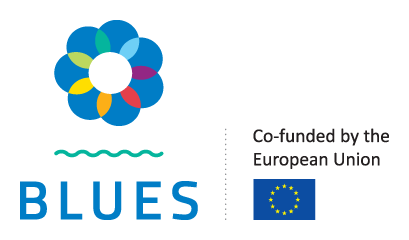Good environmental status, or GES, and a Baltic Sea in healthy state are at the core of the HELCOM BLUES project that was officially launched online from 2 to 4 February 2021. Co-funded by the European Union and led by HELCOM, the Baltic-wide effort will run through 2022, for a total period of two years.
To help attaining GES in the Baltic Sea, the HELCOM BLUES project will support the development of new and regionally coordinated measures addressing various pressures affecting the sea. It will also back assessments of the state of the Baltic through improved monitoring, notably on biodiversity, marine litter and underwater noise.
“HELCOM BLUES is an opportunity to fill the gaps we have identified so far during our journey towards good environmental status in the Baltic Sea,” said Jannica Haldin, the overall project manager and HELCOM senior expert dealing with biodiversity matters. HELCOM is concluding its first analysis ever of the sufficiency of measures (SOM) currently in place for easing the pressures on the sea, with the results expected to inform the work of the new project.
“GES is a Baltic-wide objective, and we can only achieve it through a collective effort and regional cooperation,” said Jana Wolf, the HELCOM project coordinator in charge of the day-to-day operations of HELCOM BLUES. In total, 14 partners and seven subcontractors with various backgrounds such as policy, research, academia or civil society and hailing from six Baltic Sea countries are involved in the project.
“The project also closely links to the big processes related to GES in the Baltic such as the EU Marine Strategy Framework Directive (MFSD), the HELCOM Baltic Sea Action Plan (BSAP) and the next Holistic Assessment of the Baltic Sea (HOLAS III),” said Haldin.
On the MFSD, the specific requests expressed by the EU in its initial call for project proposals – which is at the origin of HELCOM BLUES – were taken into account, notably on the development of effective regional measures to reduce existing pressures to the Baltic Sea, with a focus on biodiversity, marine litter and underwater noise. Furthermore, all results of the project will be made accessible to the Baltic Sea countries who are also EU member states to support their national obligations under the MSFD.
The outcomes of the project will also underpin the implementation of the updated Baltic Sea Action Plan that is due to be adopted in October 2021 by providing monitoring data and guidance on the implementation of measures.
It will also support HELCOM’s next Holistic Assessment of the Baltic Sea (HOLAS III) covering the period of 2016 to 2021. The project will notably provide improved assessment data, for instance by improving the capacity for biodiversity reporting and the development of indicators on marine litter and underwater noise.
Project activities
The project is built around seven activities:
- Activity 1 – Analyses to support effective regional measures
- Activity 2 – Improved regional assessment of biodiversity
- Activity 3 – Support for, and harmonisation of, regional work on MSFD Descriptor 10 (marine litter)
- Activity 4 – Support for, and harmonisation of, regional work on MSFD Descriptor 11 (underwater noise)
- Activity 5 – Data accessibility
- Activity 6 – Dissemination
- Activity 7 – Project Coordination
More info
